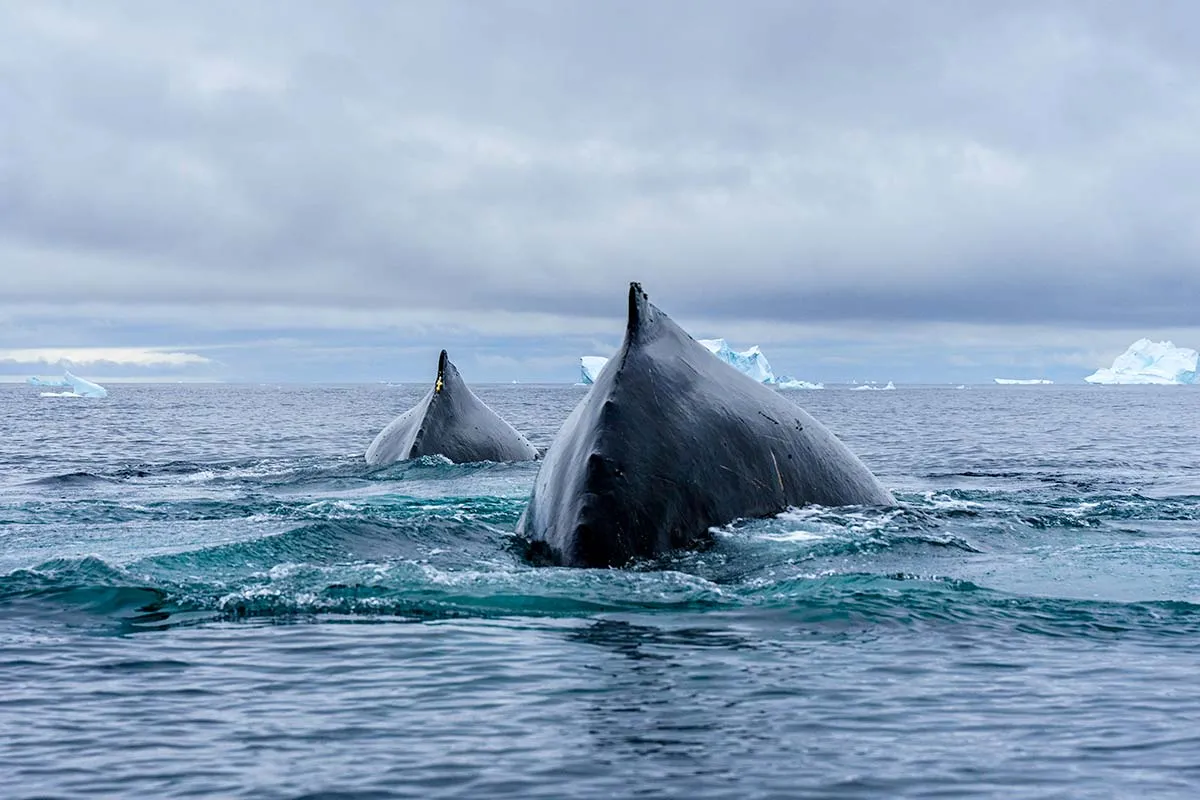
Expert guidance for your cruise vacation!
Let us connect you with our cruise expert to help you to plan the best vacation at the lowest possible price. For fastest service, call us at +91 9920688575
Madagascar & South Africa
Cruise Line: Ponant Cruises
Ship: Le-Dumont-D-Urville
Sailing Dates: Feb 02 2027
Port: Nosy Be (Madagascar) To Durban
Madagascar & South Africa
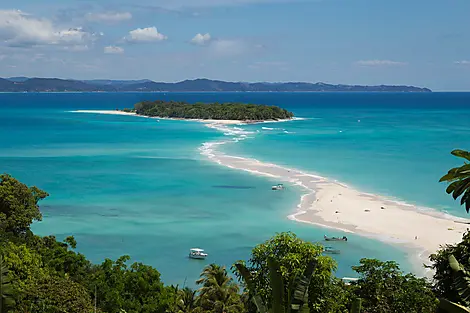
Day 1 - Nosy Be
Nosy Be (from the Malagasy: Nosy meaning island and Be meaning large), in the Mozambique Channel, is located near the north-eastern coastlines of Madagascar. A former French protectorate, known under the promising name of âthe scented islandâ, of volcanic origin, it is located on a maritime route with access to India and Asia. Cosmopolitan, a boulevard of encounters, its mixed-race and multicultural population still remembers its past as a significant trading post. Today, its 321 km² enchant lovers of nature and idyllic beaches. Its sumptuous primary forest is home to animals that are endemic to the island as well as surprising flora.

Day 2 - Nosy Hara
Its limestone rock formations rising from the waters, or marine âtsingiesâ typical of Madagascar, make Nosy Hara both exceptional and immediately recognisable. Located to the north-west of Madagascar, the island is a protected area due to its incredible biodiversity. It is a veritable open-air aquarium inhabited by around 280 marine species. The rocky columns edged with gorgeous white-sand and pebble beaches fading into shades of deep blue make an idyllic place cut off from the world. Succumb to the charms of this untouched jewel that will welcome you into its stunning decor for a special experience. This is an ideal location for snorkelling.

Day 3 - Nosy Komba
During your cruise, your ship will stop in Nosy Komba, otherwise known as âlemur islandâ. Not far from the Madagascar mainland, this volcanic island shaped like a gigantic turtle shell is covered in dense tropical rainforest. This vegetation is home to amusing black lemurs â furry orange-brown and black creatures that are surprisingly agile and call to each other from amongst the trees. The many small beaches and the emerald-coloured water make Nosy Komba a natural gem that only a select few visit.

Day 4 - Majunga
A lively and cosmopolitan town on the west coast of Madagascar, Majunga, also called Mahajanga, will be a port of call rich in discoveries. The former capital of the Sakalava kingdom, then a significant interchange due to its prime position between Africa and the Middle East, the city displays an interesting cultural patchwork. Also renowned for its outstanding natural sites, this port of call will provide you with the opportunity to discover the Cirque Rouge, immense red sandstone formations classified as national heritage.

Day 5 - At sea
During your journey at sea, make the most of the many services and activities on board. Treat yourself to a moment of relaxation in the spa or stay in shape in the fitness centre. Depending on the season, let yourself be tempted by the swimming pool or a spot of sunbathing. This journey without a port of call will also be an opportunity to enjoy the conferences or shows proposed on board, depending on the activities offered, or to do some shopping in the boutique or to meet the PONANT photographers in their dedicated space. As for lovers of the open sea, they will be able to visit the shipâs upper deck to admire the spectacle of the waves and perhaps be lucky enough to observe marine species. A truly enchanted interlude, combining comfort, rest and entertainment.

Day 6 - Morondava
To the south-west of Antananarivo lies a peaceful city on the Mozambique Channel. Capital of the Menabe region, Morondava opens the gates to some of Madagascarâs most striking landscapes. Nearby, the legendary Avenue of the Baobabs reveals a majestic alignment of giant trees, a natural monument unique in the world. With its mangroves, lagoons and wild beaches, this port of call invites you to discover an authentic and unspoilt side of the island.

Day 7 - Toliara
Located to the south-west of the island of Madagascar, near the mouth of the River Onilahy, Toliara is a charming coastal town bordered by turquoise waters. Once an important trading post, it now offers a relaxed atmosphere and access to beautiful coral reefs. Its surroundings reveal arid landscapes, fishing villages and exceptional marine biodiversity, ideal for discovering local culture and nature.

Day 8 - 9 - At sea
Enjoy these days at sea to relax and take advantage of the many facilities on board. Between lectures, shows, spa treatments and moments on deck admiring the ocean, these sea days provide a perfect balance of comfort and discovery while sailing through the Indian Ocean.

Day 10 - 11 - Richards Bay
A simple fishing village in the past, Richards Bay has become South Africaâs second largest port. Surrounded by nature reserves and wetlands, it offers access to exceptional wildlife experiences. From here, explore the iSimangaliso Wetland Park, a UNESCO World Heritage Site renowned for its ecosystems, or venture inland to discover Zulu culture and landscapes.

Day 12 - Durban
Situated in the KwaZulu-Natal region, the cradle of Zulu culture, Durban is South Africaâs third largest city. Bordered by the Indian Ocean, it is renowned for its long beaches, vibrant waterfront and multicultural atmosphere. This dynamic city marks the end of your voyage, leaving you with unforgettable memories of the Indian Ocean and Madagascarâs exceptional landscapes.
Odyssey in the heart of Japan's subtropical islands[Hong Kong - Naha, Okinawa]
Cruise Line: Ponant Cruises
Ship: Le-Jacques-Cartier
Sailing Dates: Feb 22 2026
Port: Hong Kong - Naha, Okinawa
Odyssey in the heart of Japan's subtropical islands[Hong Kong - Naha, Okinawa]
Ports of Call & Excursions

Day 1 - Hong Kong
Hong Kong, known as the âFragrant harbourâ, bordered by the South China Sea, is a heady place attracting tourists from the world over. This former British colony today combines ultramodern shopping malls and authentic markets like the Ladieâs Market or the night market on Temple Street. At first sight, youâll be overwhelmed by the cityâs architecture which, because of lack of ground space, reaches skywards, with its 1,250 skyscrapers and other towers. Believing is seeing, so if you go up to Victoria Peak, the highest point on the island, youâll see a dizzying and unforgettable view of the bay.

Day 2Â Â - 3 - At sea
During your journey at sea, make the most of the many services and activities on board. Treat yourself to a moment of relaxation in the spa or stay in shape in the fitness centre. Depending on the season, let yourself be tempted by the swimming pool or a spot of sunbathing. This journey without a port of call will also be an opportunity to enjoy the conferences or shows proposed on board, depending on the activities offered, or to do some shopping in the boutique or to meet the PONANT photographers in their dedicated space. As for lovers of the open sea, they will be able to visit the shipâs upper deck to admire the spectacle of the waves and perhaps be lucky enough to observe marine species. A truly enchanted interlude, combining comfort, rest and entertainment.

Day 4 - Ishigaki
Located to the south of the main island of the Yaeyama archipelago, Ishigaki boasts all the aspects of an authentic piece of paradise. You have guessed it, you do not come here for its skyscrapers but for its pure emerald waters and idyllic beaches. The waters off Shiraho, on the island's south-west coast, have one of the largest areas of blue coral in the world.

Day 5 -Taketomijima
Off the coast of the Okinawa Prefecture, Taketomi Island (Taketomijima) is fascinating for its traditional character, preserved in a beautiful, lush setting. Like its big sisters, Ishigaki and Kuroshima, this island in the Yaeyama archipelago is the ideal destination for an immersion in typical landscapes and the insular way of life of the former Ryukyu Kingdom. Here, time seems to have stood still. There are very few cars about; bicycles and carriages drawn by imposing oxen remain the only means of transport. This is an ideal opportunity to wander through the picturesque streets lined with traditional dwellings with red-tiled roofs and lion-shaped shisa statues placed in front of the vast majority of houses to keep evil spirits at bay.

Day 6 - Iriomotejima
Nestled in the very heart of the Yaeyama archipelago, Iriomote Island conjures visions of a hidden paradise. With 90% of the island covered by thick jungle, crossed by rivers and impressive mangrove forests, Iriomote is an ideal destination for fans of large preserved spaces. With exceptional fauna and flora, this lush jewel is home to many endemic species: you may be lucky enough to get to glimpse an Iriomote cat or a crested serpent eagle. During this port of call, you will also have the possibility of admiring the captivating underwater world during a free diving session or contemplating this lush jungle close up on a cruise along the calm waters of the islandâs rivers.

Day 7 - Yonagunijima
The geographic situation of the island of Yonagunijima, the most remote and western in the Japanese archipelago of Okinawa, makes it a wild and preserved territory. Between cliffs plunging into the sea and white sandy beaches, lush meadows and palettes of blue, we can admire the last sunset every day here in the Land of the Rising Sun. The island is also renowned for the Yonaguni horses, a small breed standing only a metre high, which graze freely here. If you dive, Yonagunijima will delight you with its sea beds which are as exceptional as they are mysterious.
Â

Day 8 - Miyakojima
Situated between the East China Sea and the Philippine Sea, Miyakojima is the main island of the Miyako Islands, in the Sakishima archipelago. The fourth largest island in the Okinawa prefecture, it is known for its many sugar cane plantations and some of Japanâs most beautiful beaches. Myriad multicoloured fish await you during unforgettable swims and snorkelling.

Day 9 - Kumejima
Located 90 km (56 miles) to the south-west of Okinawa Honto, Kumejima is a multifaceted island home to natural treasures. Hatenohama, a stunning 7 km-long (4.3 miles) fine-sand beach, promises wonderful carefree moments discovering the exceptional underwater worlds off the coast of Kumejima. Mifuga, a rock formation on the north coast of the island with a hole right through its middle, is a great example of the erosion along the coast. The eastern peninsula offers another geological feature, visible at low tide: 1,000 flat rocks each around one metre (3.2 feet) in diameter, formed by the contraction of lava from a nearby eruption a million years ago. They create a rocky plateau resembling a traditional Japanese tatami, hence the name Tatami-ishi.

Day 10 - Iheyajima
The northernmost island of the prefecture of Okinawa, Iheyajima is a small territory that will take you back in time. At the heart of preserved natural landscapes that are a reminder of the Okinawa of the past, the inhabitants perpetuate traditional culture, particularly by maintaining ancient rites and ceremonies in honour of the divinities of the Ryukyu Kingdom. The island is home to several historic sites, such as the tomb of the ancestors of King Sho Hashi, the unifier of Okinawa and founder of the Ryukyu Kingdom, which was independent from Japan until the end of the 19th century. In this natural setting, whose emblematic Nento-Hiramatsu pine tree is a national monument, perhaps you will enjoy the privilege of seeing a traditional âEisaâ drum performance.

Day 11 - Motobu, Okinawa
To the north of the island of Okinawa, lying between the azure ocean and lush hills, Motobu inspires contemplation. This Japanese paradise, far off the beaten track, unveils landscapes steeped in poetry. A setting of pristine nature, with Mount Yae as a backdrop, Motobu reveals itself through its white sandy forests and its wild and preserved Yambaru forest, home to a rare wealth of fauna and flora. The hiking paths invite you to explore this incomparable nature, where every step reveals breathtaking panoramas and age-old legends.

Day 12 - Zamami
Zamami is an island in the Kerama archipelago, 40 km (25 miles) west of Okinawa Island in the China Sea. Visitors to this 16 km2 (6 mi2) quasi-uninhabited isle are enchanted by the many untouched natural treasures they find here. You will discover a tranquil island with lush vegetation, lined with stunning white-sand bays bathing in the glimmering âKerama blueâ waters around the archipelago. Zamami is also renowned for the beauty of its coral reefs, where multicoloured fish engage in an endless mesmerising ballet. The observation deck on Mount Takatsuki reveals stunning views of the Kerama Islands, granted national park status in 2014. With subtle shifting shades of azure above and all around, this island truly is paradise.

Day 13 - Naha, Okinawa
Capital of Okinawa Prefecture, the town of Naha is located on the south-west of the island. You will love its lively atmosphere, particularly along Kokusai Dori, otherwise known as 'international street'. The picturesque Makishi Public Market, nicknamed 'Naha's kitchen' offers a profusion of colourful fish, Okinawan foodstuffs and local spices and you can sample delicacies cooked on the spot.
Islands and cities, from the North Sea to the Baltic
Cruise Line: Ponant Cruises
Ship: Le-Champlain
Sailing Dates: Jul 06 2026
Port: Fredrikstad to Helsinki
Islands and cities, from the North Sea to the Baltic

Day 1 - Fredrikstad
Nestling on the shores of the Glomma estuary, Fredrikstad captivates with its rich historical heritage, picturesque canals and warm atmosphere. Founded in 1567, the fortified old town still has traces of its rich past. Fall under the spell of its cobbled narrow streets, edged with traditional old wooden buildings, boutiques and lively cafes, and also discover the extremely well-preserved ramparts, built almost 5 centuries ago. Nature enthusiasts will also appreciate the magnificent hiking paths along the Oslo fjord and surrounding islands, such as Hankø, with its idyllic beaches and lush plains.

Day 2 - Aalborg
In the very north of Denmark, on the banks of the Limfjorden sea,the Viking town of Aalborg opens its welcoming arms. A must-see is the Aalborg tower standing like a lighthouse in the middle of the town. At the top, a magnificent view of the surroundings awaits your visit. Several museums, including the Utzon Centre, propose a sample of local artistic creation. As far as shopping goes, the famous JomfruAneGade street and its district, include some of the most beautifulDanish fashion boutiques as well as numerous restaurants and cafés where you might try one of the countryâs specialities such as âplatteâ
2 available excursions
Trip to Marstrand, a Swedish beauty, Strolling the streets of Marstrand

Day 3- Copenhagen
Connected to the far eastern side of Sealand island, a few kilometres away from the Swedish coasts, Copenhagen offers you the high colour of Scandinavian capitals. You can discover the city's riches that weaves through the canal networks through the historical districts of Christiansborg and Nyhavn. Many palaces provide an apercu of Danish history. For eating, you can try out the smorrebrod, traditional danish sandwiches made with ham, cheese or smoked fish.
3 available excursions
City tour & canal cruise, Royal Highlights, Kayaking in the Canals of Copenhagen

Day 4 - Gudhjem, Bornholm
Lying in the south-west of the Baltic Sea, the medieval village of Gudhjem, on the island of Bornholm, is one of the most visited and most popular villages in Denmark. As you stroll along its picturesque streets, you will fall under the spell of its varied landscapes, its easy way of life, and the authenticity of this charming town with half-timbered houses topped with red roofs, in the Danish tradition. It is here, along these charming streets, that the first herring smokehouses were built in the mid-19th century, attracting all the regionâs fishermen. Tucked away in a gorgeous natural setting composed of rocky cliffs, dense forests and beaches of white sand, Gudhjem will provide an unforgettable interlude where time will seem to stand still.
2 available excursions
Nature and villages of Bornholm, The best of Bornholm

Day 5- Visby, Gotland
This old Hanseatic city lies to the west coast of Gotland, a Swedish island in the Baltic sea. Pass through the spectacular Visby fortifications and visit the old town, a UNESCO World Heritage site. Youâll discover the grand Visby homes of rich merchants as well as the lovely low wooden houses in the little cobbled streets. Donât miss Saint Maryâs cathedral with its octagonal steeples, as well as Powder tower along the fortifications. Make sure you stop over in one of the rose-adorned cafés; indeed roses abound in this town where you can taste one of the islandâs specialities, namely saffron pancakes with red fruit.
1 available excursions
Visby on your own

Day 6 - Gdansk
This ravishing city on the Baltic sea is nicknamed âthe golden door of Polandâ, and youâll understand why when you see its beautiful Hanseatic architecture. Youâll be charmed by the mouldings and gables that enhance the colourful façades of the houses. Along the Vistula Quays, you can take a pleasant stroll among the crafts shops. In elegant Mariacka street, the amber jewellers will most certainly tempt you into their boutiques. You can visit the church of Saint-Mary and its astronomic clock. Not far, the majestic Long Market square offers the famous Artus Court and the rich Gdansk History Museum.
2 available excursions
Gdansk city tour & Chopin concert, Malbork Castle

Day 7-8 - Stockholm
The capital of Sweden occupies an archipelago in the east of the country at the junction of Mälar Lake and the Baltic sea. In Gamla stan, meaning âold townâ in Swedish, you can stroll at your leisure in picturesque medieval streets until you reach the majestic Royal Palace. On the green island of DjurgÃ¥rden, you can visit several very different kinds of cultural centres: the Vasa museum is dedicated to a 17th century three-mast, the ecomuseum of Skansen presents traditional customs, and the ABBA museum is dedicated to the legendary pop group. For a fantastic, all-encompassing view of Stockholm, you can take a ride in SkyView, a glass-encased sphere gondola that takes you to the top of the worldâs largest building, the Ericsson Globe, a Stockholm landmark.
3 available excursions
Stockholm beauty land and water, Stockholm city tour & Vasa Museum, Stockholm & Sigtuna

Day 9 - Saaremaa
Welcome to Estoniaâs largest island, Saaremaa, with its age-old history and mysterious charm. Located in the Baltic Sea, it closes off the Gulf of Riga. The episcopal castle, a medieval fortress and preserved witness of the rich history of the Baltic States, stands proudly in the islandâs capital, Kuressaare. The islandâs soils and mild climate give it abundant and diverse nature, where forests, cliffs, dunes and beaches flourish, becoming a haven for thousands of migratory birds every year. The island offers many treasures, between wild nature, nature reserves, meteor craters and windmills.
4 available excursions
Kuressaare and its beer-brewing tradition, Landscapes and heritage of Saaremaa, Saaremaa, pearl of the Baltic Sea, Traditional farm, folk show and visit of Kuressaare

Day 10 - Tallinn
Opening onto the Baltic sea, to the far north of Estonia, the town of Tallin will win you over with the picturesque charm of its architecture. You can meander through its little streets in the heart of the medieval centre where its gothic town hall has been standing since 1404. The Kiek in de Kök tower, the Orthodox Alexander Nevski cathedral, or Toompea castle give visitors a taste of this townâs rich past. The city was particularly active during the medieval period, as is demonstrated by the very beautiful monuments from this period that are still visible. Don't hesitate to lose yourself in the heart of Tallinn, listed as a UNESCO World Heritage Site.
4 available excursions
Gothic treasures of Tallinn, Tallinn & folklore, Historic sights of Tallinn and Kadriorg Palace, Discover the Estonian cuisine

Day 11 - Helsinki
Seated in the southern peninsula of Finland, Helsinki offers the buzz of a cosmopolitan city that has opted for both elegance and beauty. Explore its historical centre where the soft hues of neoclassical buildings are juxtaposed with spectacular modern constructions. The bustling Kallio district is teeming with boutiques and restaurants where you can taste some local specialities like graavilohi - a sweet, marinated, aromatic salmon dish. Keskuspuisto park, a stoneâs throw from the centre, is a good place to sit and unwind.
3 available excursions
Helsinki highlights, Suomenlinna Fortress, Kayaking the Helsinki archipelago
Antarctica's Whale Season
Cruise Line: Polar Latitudes Expeditions
Ship: Ocean Albatros
Sailing Dates: Mar 09 2026 | Mar 18 2026
Port: Ushuaia to Ushuaia
Antarctica's Whale Season
Day 1
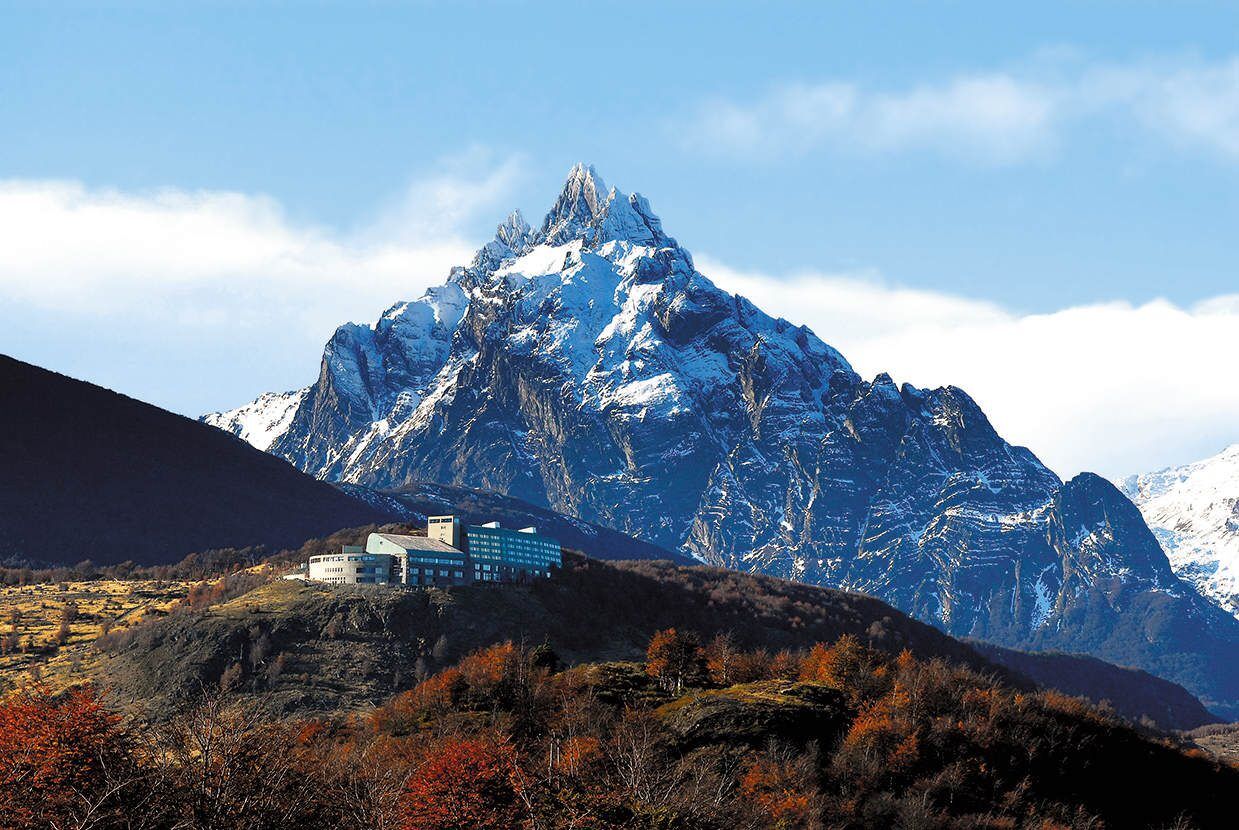 Arrive and explore in Ushuaia
Arrive and explore in Ushuaia
After a friendly welcome at the airport and a transfer to the luxurious Arakur Ushuaia Resort & Spa, take some time to unwind or explore the southernmost city in the world, Ushuaia. (In the unlikely event that you can't be accommodated at the Arakur, you'll unwind at another of Ushuaia's top luxury hotels.)
Our optional evening briefing is your opportunity to ask questions and meet some of your fellow explorers.
Day 2
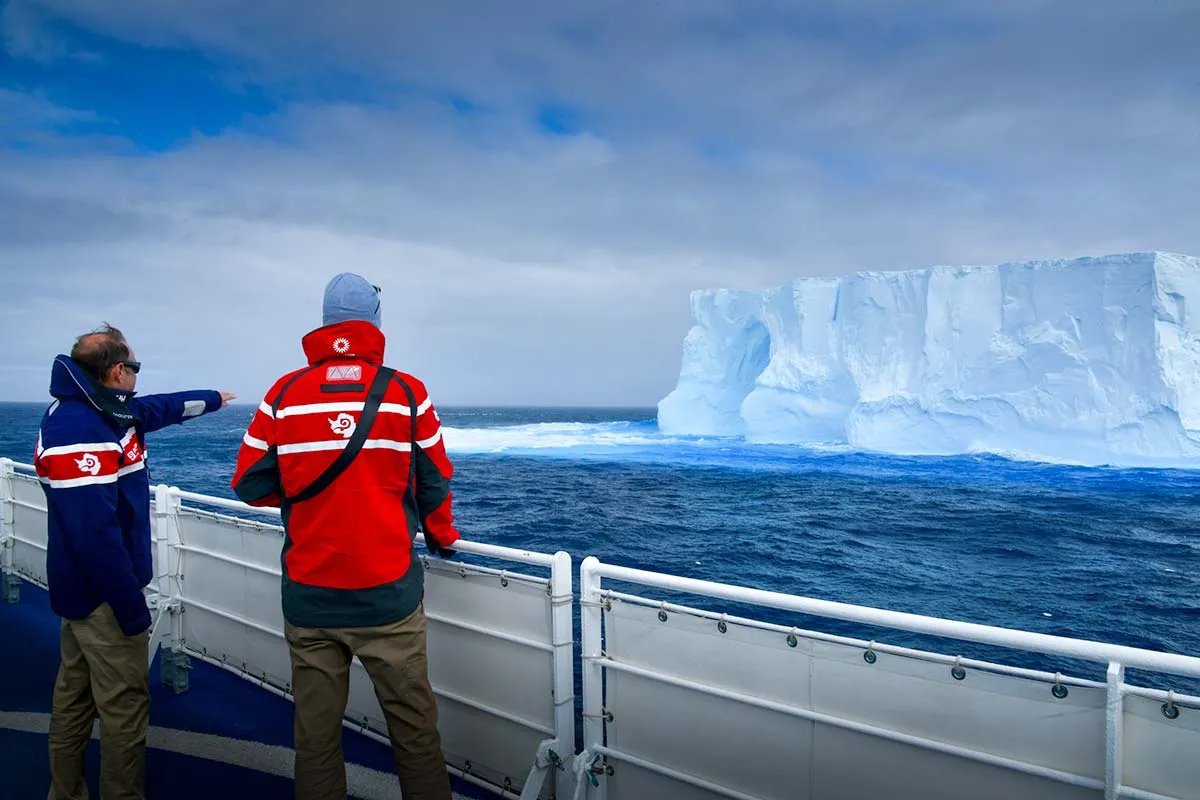 All Aboard!
All Aboard!
Spend your morning relaxing at the hotel, visiting a museum, or exploring the shops in Ushuaia, before our mid-afternoon escort to the ship. Our Expedition Team and ship staff will welcome you on board and get you settled in, followed by a safety and orientation briefing and our Captainâs welcome dinner. Weâre on our way to Antarctica!
Day 3-4
 Drake Passage
Drake Passage
Join our Polar Experts as they share their vast knowledge of Antarctica, from its enchanting wildlife to its bold history. Participate in our pioneering Citizen Science program or sit back and take in this fabled journey while catching glimpses of rarely seen wildlife. Keep your binoculars handy to identify the many seabirds that escort our ship as we cross the Antarctic Convergence into Antarcticaâs waters and noticeably cooler temperatures.
Day 5-6
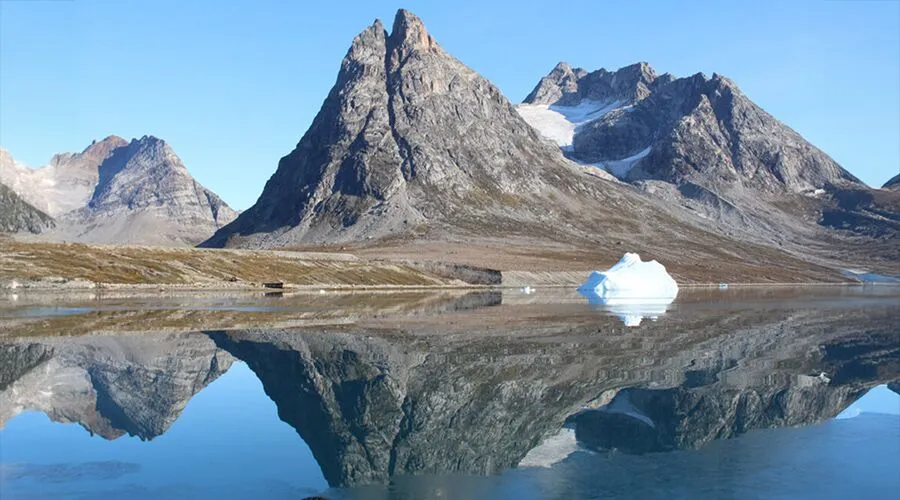 South Shetland Islands
South Shetland Islands
The South Shetlands are 12 islands separated from the Antarctic Peninsula by the Bransfield Strait. Significant volcanic activity has sculpted a geology â and a diverse natural beauty â unlike anywhere else on Earth. Here, you can expect a spectacular display of mountains, glaciers, and wildlife, including Chinstrap and Gentoo penguins, and itâs not uncommon to share the waterâs edge with Elephant and Fur seals. And this time of year is feeding time for Humpback whales, so donât be surprised if youâre joined by a number of them on your dayâs adventure.
Day 7-8
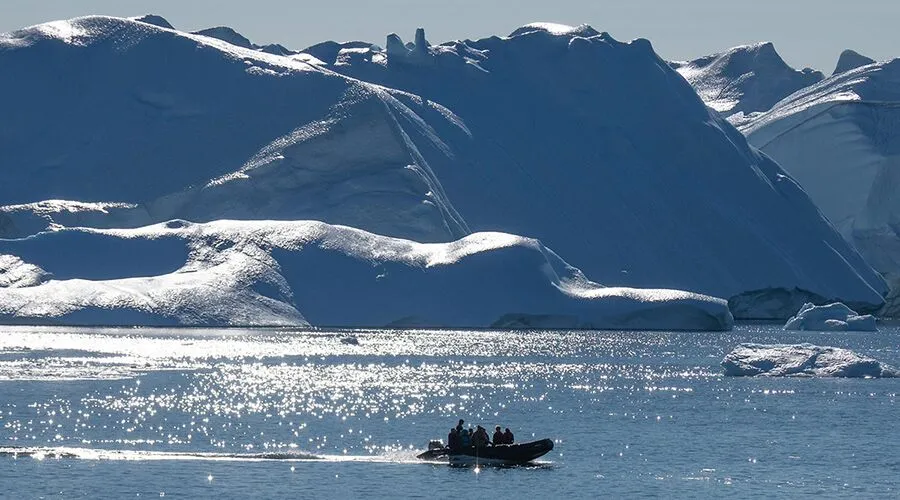 Antarctica (and Whales) Await
Antarctica (and Whales) Await
On to the Antarctic Peninsula, where weâll explore any number of stunning bays and famed landing sites, maneuvering through majestic channels as we continue to navigate these wildlife-rich waters, passing any number of glorious icebergs, on our way to historic landing sites and perhaps even an active scientific base. Of course, a spectacular highlight of this voyage is the likelihood of encountering the giant Humpback whale â or many of them! â feeding on the abundance of krill in the water this time of year. Orcas and Minkes are also common sightings, as are a variety of penguins and seals.
Day 9-10
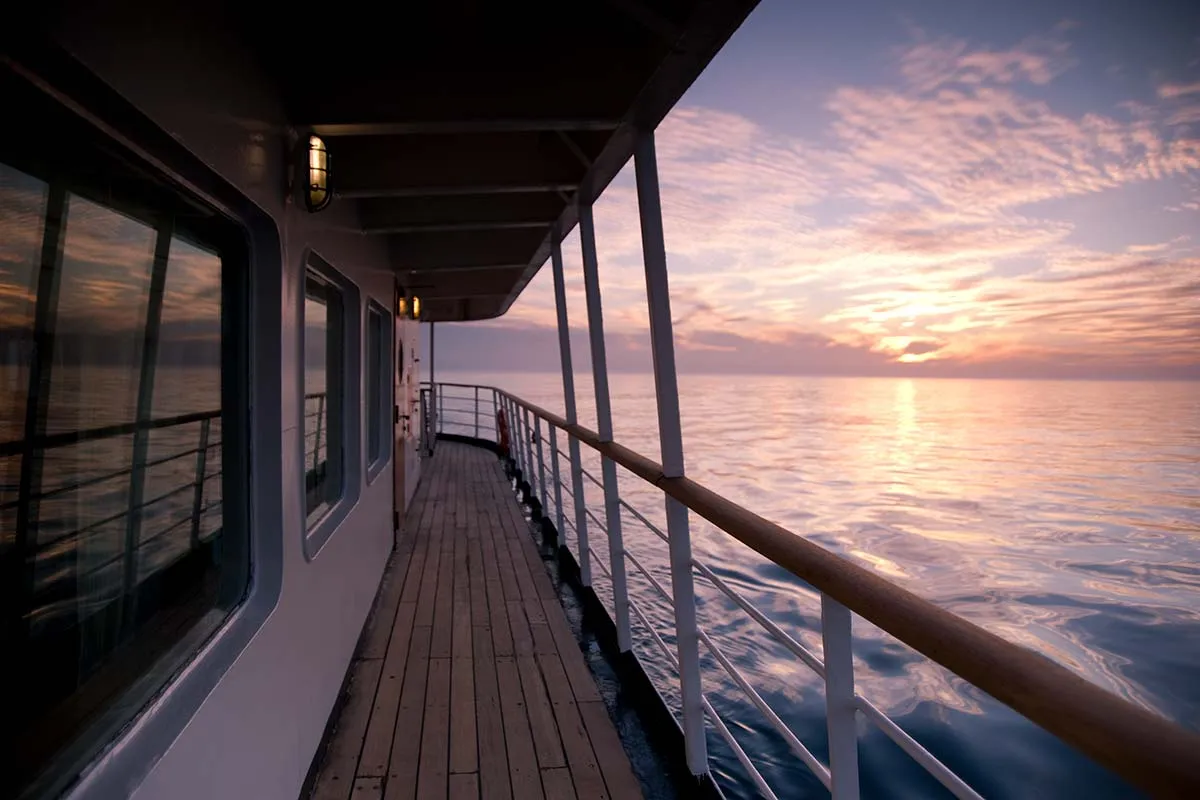 Drake Passage
Drake Passage
We leave this magical place and make our way north, once again heading across the Antarctic Convergence and the Drake Passage. We have one last hurrah as we celebrate the conclusion of our expedition with a special slideshow and a final meal together.
Day 11
 Ushuaia Disembarkation
Ushuaia Disembarkation
With huge smiles on weary, content faces, we disembark in the morning, letting you catch a flight to Buenos Aires or stay in Ushuaia for more sights and adventure.
Complete East Greenland
Cruise Line: Polar Latitudes Expeditions
Ship: Ocean Albatros
Sailing Dates: Sep 17 2027
Port: Reykjavik, Iceland to Reykjavik, Iceland
Complete East Greenland
Day 1
Reykjavik, Iceland
The rock-like columns of HallgrÃmskirkja Church loom over the city of ReykjavÃk, a hip Scandi capital which needs little introduction. With new Nordic cuisine, excellent shopping, fantastic excursions and an easy relaxed vibe, ReykjavÃk is one of Scandinavia's most welcoming and exciting cities.
In the afternoon, we await to welcome our guests onboard Ocean Albatros. After our mandatory safety drill, enjoy dinner and a glass of champagne as we set sail a course for adventure as we set out across the Denmark Strait, bound for Greenland.
Day 2
At sea, Crossing the Denmark Strait
The Denmark Strait is the narrow section of the North Atlantic separating Iceland from Greenland. This body of water is among the most productive in the world, where the cold polar East Greenland Current collides with the warm northbound Gulf Stream. These nutrient-rich waters support vast stocks of fish, and the humans, seals, whales and seabirds which rely on them.
Days at sea are never dull. We will arrange a variety of activities onboard for our guests to enjoy to engage the mind, body and soul. Join your knowledgeable Expedition Team lecturers in the Theatre to hear specially-crafted lectures on Greenlandic history, wildlife, geology, culture and more, unwind with a massage in the Albatros Polar Spa, or simply watch the seabirds gliding along the ship from our hot tubs as the Ocean Albatros flies across the Denmark Strait.
Day 3
Kuummiut and Ikateq
We will spend the morning in the small village of Kuummiut, which sits in breathtaking surroundings in the calm reaches of Ammassalik Fjord. Kuummiut - meaning 'People who Live by the River' - is one of the larger villages in the area, and one of the most prosperous. Sitting upon some of East Greenland's richest fishing grounds, Kuummiut holds the only fish factory in the region, and fishermen from miles around come through Ammassalik Fjord (which is wide enough to stay mostly ice-free year-round) to sell their catch here.
Kuummiut is an ideal place to experience life in an East Greenlandic settlement. Where other towns have traffic, Kuummiut has the yowling of sled dogs and the sigh of the wind through the grass. No roads lead in or out of this isolated village, and the sea is the highway for local transport - although motorboats have replaced the skin boats which brought people to these shores long ago. It is a perfect place to simply sit, watch the icebergs pass, and perhaps see the whales which often frolic in the calm waters offshore.
In the afternoon, we will sail slightly eastward from Kuummiut to Ikateq, a spectacular fjord with a fascinating history. During the darkest days of the Second World War, American forces established an airbase here (one of the network of air bases which includes Kangerlussuaq on the west coast) to serve as a stepping stone for aircraft transiting between Europe and North America. The rugged landscape of East Greenland meant the approach into the airport was hazardous, with frequent fog masking the treacherous mountains. Huge recources were invested into Ikateq Airbase (also known as Bluie 2 East), with a 5,000ft runway, hangar, barracks and port constructed. A fleet of military vehicles and thousands of barrels of fuel were also brought to this remote region. With Germany defeated, improvements to intercontinental aircraft, and increasing tensions with the Soviet Union, the United States Military abandoned the base in 1947, leaving almost everything behind.
The air base has been a bone of contention between Nuuk, Copenhagen and Washington for many years. Many in the Greenlandic government wanted the site cleaned up and the ruins removed; an expensive and logistically challenging task. Eventually, the Danish Government agreed to remove hazardous waste from the site (mainly decaying fuel drums), leaving the rest of the equipment in place as an important part of regional history. Over 75 years later however, almost everything remains as it was on the day the Americans left. Ikateq is a truly unique place, a time warp to the Second World War: eerie, fascinating and surrounded by staggering natural beauty.
Day 4
Tasiilaq
In the morning we arrive in Tasiilaq, the largest settlement in East Greenland. Unlike the west coast, which has had uninterrupted contact with Europe since the 1700s, the coast of East Greenland remained more or less uncontacted until around 1894, when a Danish trading post was established at Tasiilaq. The vast distances involved in Arctic travel meant that the people of East Greenland (Tunumiit) were isolated from their cousins to the west, and the language, traditions and culture of East Greenland therefore differ significantly to those in other parts of the country.
Ancient traditions are strong here. This region of Greenland was the home of the last Angakkuit (Shamans) of Greenland, and is the home of the tupilak - a monster fashioned from animal (and sometimes human) body parts and animated by the power of an Angakkuq to wreak havoc on enemies. Creating such a monster was dangerous, as it could be turned back by a more powerful magic user to attack its creator. The first Europeans were curious as to what these dark beasts looked like, and locals carved facsimiles in bone or horn, beginning one of Greenland's finest artistic traditions. The tupilaat made by artisans in Tasiilaq are considered among the best in the country.
Tasiilaq sits in a perfect natural harbour on Ammassalik Island (meaning 'the Place of Many Capelin'). While superficially similar to towns on the West Coast, visitors will quickly notice differences; the landscape here is much more rugged, the people fewer, and the sled dogs much more numerous. Tasiilaq offers excellent opportunities to explore, with excellent hiking routes such as the Flower Valley easily accessible from town. For those wishing to delve into Tunumiit culture, visit the museum, located in the city's old church, hear the city's exquisite choir perform in the modern church, or watch a drum dancer in traditional East Greenlandic costume perform a millennia-old spiritual tradition. For those wishing to indulge in some retail therapy, visit the Stunk Artist's Workshop, where skilled craftsmen create beautiful pieces from natural local materials.
Day 5
At sea, en route to Ittoqqortoormiit
Sailing along the coastline of this vast island (where reaching the next-closest town takes two nights and a day of sailing), it can be difficult to comprehend the scale of this huge country.
Measuring roughly four times the size of France, Greenland dominates the Atlantic portion of the Arctic, covering latitudes from 59-83°N, and 11-74°W. Around 80% of Greenland is covered by the Greenland Ice Sheet (known as Sermersuaq or 'The Great Ice' in Greenlandic), the largest body of ice on earth outside Antarctica. The Greenland Ice Sheet is so vast that it governs the weather patterns of the region, with summer meltwater and winter ice largely driving ocean currents in this part of the North Atlantic.
Despite the lack of towns, the stretch of coastline between the Ammassalik and Scorsesbysund region is of vital importance to the residents of the area. During the summer, locals hunt whales, seals and other game by boat along the coast of this vast wilderness, as their ancestors have done since time immemorial. Some skilled hunters still choose to use kayaks to sneak up on skittish prey like narwhals - continuing a millennia-old hunting tradition. While some choose to use snowmobiles in winter to traverse the sea ice which hugs the coast, most hunters choose to use dogsleds, which are more reliable, rugged, and do not rely on fuel. In this challenging country, ancestral traditions are still superior to the trappings of modern life.
Day 6
Ittoqqortoormiit
Entering Scoresbysund, Earth's largest and longest fjord system, one could be forgiven for not realising this huge 35km inlet is a fjord at all! Scoresbysund is named for English whaler and explorer William Scoresby, one of the first Europeans to map this region; the local name for this vast fjord system, Kangertittivaq, is a typical Greenlandic understatement, roughly meaning 'The Rather Large Fjord'.
The only settlement in this region is Ittoqqortoormiit (meaning 'the People who Live in Big Houses), which surely ranks among the most remote communities on Earth. As the name suggests, the town is relatively new, having been established by Danish authorities in 1925. Colonists were relocated from the Ammassalik region further south in response to what were seen as poor living conditions in the area, as well to establish Danish sovereignty in the region during a territorial dispute with Norway. While the establishment of the town was challenging, the settlers soon realised the region was hugely rich in game, with excellent hunting and trapping opportunities. This tradition continues to this day - the majority of residents continue to live a subsistence hunting lifestyle, essential in a town where supply ships arrive only once or twice each summer. The only access to the outside world is via the heliport to the nearby airport, from where small aircraft depart for Iceland.
Ittoqqortoormiit is a town with a strong sense of community and traditional culture, where foreigners are welcomed warmly. The town hosts an excellent museum, a beautiful traditional Greenlandic church, and locals often welcome visitors to their community wearing colourful traditional costumes. The town represents a wonderful introduction to the culture and lifestyle of Northeast Greenland, in one of the most spectacular natural locations anywhere in the world.
Day 7-9
Northeast Greenland National Park
During the night we cruise past the rugged peaks of the Liverpool Land peninsula and reach the mouth of King Oscar Fjord. We are now in the vast Northeast Greenland National Park; measuring almost a million square kilometers (almost twice the size of France), this is the largest National Park and the largest area of protected land on Earth and includes the northernmost land on the planet.
There are no permanent settlements in the area, but up to the middle of the 19th Century various nomadic Inuit hunters lived in this spectacular region, harvesting the natural riches of the area.
The program for our days in the National Park depends on wind, sea, weather and ice conditions. In such a remote region so far north, Mother Nature dictates all human activity. Our exact route and activities will be determined by the Captain and the Expedition Leader jointly and are typically announced the night before.
Some of the interesting landings we may visit include the 1300-meter-high rock wall Bastionen on the coast of Ella Island. Further north we may pass pass the small Maria Island, where the Germans had a camp during World War II. The Germans' attempt to gain a foothold in Greenland during World War II is a fascinating story in itself. Past Ruth Island, we hope to make a landing on Ymer Island at Blomsterbugten, a small oasis in the national park. From the tiny hunting lodge Varghytten we can enjoy the formidable view of the characteristic, flat mountain Teufelsschloss, where the multicoloured rock layers testify to the area's exciting geological development. From here, we may aim to sail by the mighty iceberg-producing Waltershausen Glacier before entering beautiful Moskusokse Fjord. On our way back towards open sea we might aim for landings on Jameson Land, which is a breeding ground for polar bears.
Wherever we go in this vast wilderness, our guests can be sure of encountering excitement, adventure, and mind-boggling natural beauty. Our experienced Expedition Team will be on hand to provide guests with as much knowledge of the region as possible; either in hand-crafted lectures, evening recaps, onshore, or over a cup of coffee on deck. Throughout our time in the National Park, our skilled Expedition Team members will be constant lookout for the charismatic wildlife of the region - keep your binoculars handy!
Day 10
Blosseville Coast
Possibly the most dramatic coast outside of Antarctica, the Blosseville is guarded by Greenlandâs highest mountains and steepest fjords â and a belt of pack ice which was once able to ward off explorers, sometimes for years at a time!
The Blosseville Coast is named for French Explorer Jules de Blosseville, the first European to sight this formidable coastline. While attempting to survey the coast in 1833 onboard the vessel La Lilloise, the vessel and all onboard were lost without a trace. Subsequent expeditions failed to find any trace of the vessel, and its fate remains a mystery to this day.
The recent decades have also had warmer summers and reduced sea ice cover, which enables purpose-built ice-strengthened vessels such as the Ocean Albatros to venture along the coast, on lookout for polar wildlife, abandoned Inuit settlements and otherworldly landscapes.
Day 11
At sea, en route to Reykjavik, Iceland
During our time at sea approaching Reykjavik, a variety of activities will be arranged on board to provide our guests with the chance to reflect on their voyage. Relax with an expertly crafted cocktail in the Nordic Bar in the company of new friends, soak up the knowledge and passion of our Expedition Team during lectures, or simply enjoy the flight of the fulmars which accompany us towards Iceland.
During your last evening onboard, join the Captain and Officers for the Farewell Cocktail Party, followed by a presentation of photos and video by our onboard photographer - the ideal opportunity to re-live your Arctic adventure. Skal!
Day 12
Reykjavik, Iceland
As the Icelandic capital comes into view on the horizon, strange objects appear; trees larger than ankle height, glassy skyscrapers and streets full of cars, busses and people... Such a bustling capital may feel strange after the remote wilderness of Greenland!
After a hearty breakfast, it is time to bid a fond farewell to the Crew and Expedition Team of Ocean Albatros, and descend the gangway back to dry land with memories of the voyage of a lifetime.
Wild lands of Scotland, the Faroe Islands and Iceland
Cruise Line: Ponant Cruises
Ship: Le-Bellot
Sailing Dates: Jul 09 2026
Port: Glasgow, Scotland - Reykjavik
Wild lands of Scotland, the Faroe Islands and Iceland

Day 1 - Glasgow, Scotland
In the heart of the Clyde Valley, the bustling city of Glasgow contrasts starkly with the wild beauty of the surrounding countryside. Scotland's biggest city overflows with landmarks from its extensive artistic heritage and outstanding architectural tradition. The city's chequerboard layout makes walking through the major pedestrian thoroughfares easy: go with the flow and let the lively street atmosphere take you past the many Victorian monuments. Don't miss the collections on display in the numerous museums and art galleries. The Kelvingrove Art Gallery and Museum is an outstanding example.

Day 2 - Belfast, Northern Ireland
The capital city of Northern Ireland is located on the very tip of Belfast Lough, in the north-east of the Emerald Isle. Along the waterfront, the building shaped like a fragmented liner is non other than the Titanic Belfast, a homage to the famous transatlantic liner, with full-scale reconstructions making for an insightful experience of the Belle Epoque. In the historical centre, youâll also travel back in time when you see the majestic Edwardian columns of the City Hall, and the imposing neo-gothic towers of Queenâs University for example. The carved wooden façades of the Victorian pubs will certainly entice you in for a pint of beer or chilled cider.
3 available excursions
Panoramic Belfast & Titanic, Ulster Folk Museum experience, Spectacular Giants Causeway

Day 3- Sailing on Loch Linnhe
Loch Linnhe is located in the Scottish Highlands, stretching between the Isle of Mull and Fort William. Sail in the heart of picturesque landscapes and admire the formations of the magnificent mountains and valleys surrounding the loch, including the famous Ben Nevis. The pure waters of Loch Linnhe are teeming with marine life; harbour seals may be found among its faithful inhabitants.

Day 3 - Fort William
A port town on the eastern shore of Loch Linnhe, Fort William is sometimes described as the "Outdoor Capital of the UK."Â Because it sits at the base of Ben Nevis, the highest peak in the British Isles, and is in close proximity to the dramatic landscape of Glencoe, it is a popular destination for hikers and rock climbers. For those looking for a less adventurous experience, the nearby Ben Nevis Distillery offers tours and tastings, and Old Fort and Old Inverlochy Castle are interesting historical sites.
3 available excursions
Glencoe & the Highlands, Wonders of the Highlands, Glen Nevis walk

Day 4- Stornoway, Hebrides
Discover Lewis, the largest island of the Hebrides, considered to be the cradle of Gaelic culture. Here, the peat- and heather- covered valleys and lochs stretch on to infinity, and numerous bird colonies have taken up residence in the long, jagged coastlines where. Not far from Stornoway, the islandâs main town, built by the Vikings in the 9th century stands one of Scotlandâs most prominent prehistoric sites: The Standing Stones of Callanish. Dating back to more than 3,000 years B.C., these imposing stones placed in a cruciform pattern were laid out according to the moon and stars and their main purpose was to keep track of seasonal cycles, as this was essential for farmers at the time.
4 available excursions
Historic Lewis, Discover Harris Tweed, Explore Bostadh, Essential of Lewis

Day 5 - Suduroy Island, Faroe Islands
Suduroy Island, literally âSouth Islandâ, has one of the smallest populations in the Faroe Islands. It has sheer cliffs along its western face. The island is an important breeding ground for seabirds, including northern fulmars, black-legged kittiwakes, Atlantic puffins, and guillemots. You will be guided through the island, exploring its authentic villages with black, tarred-wood churches typical of the Faroe Islands, as well as its hiking trails lined with peat fields and stone sheepfolds. Sheep are indeed omnipresent throughout the Faroe Islands â in fact, there are more sheep than humans â, and they add to the charm of these wild landscapes.
3 available excursions
Hiking in Hvannhagi, Suduroy, unspoiled nature, Faroese geology

Day 6 - Streymoy Island, Faroe Islands
Streymoy Island is the largest and most populated of the Faroe Islands, with 22,500 inhabitants. Lying between Scotland and Iceland, the 18-island Danish archipelago boasts natural wonders that will fascinate lovers of the great outdoors. Here, the hilly green landscapes stand in contrast with the huge basalt cliffs and the invigorating air shifts with the moods of the ocean. To the north, the small village of Saksun, with its traditional grass-covered rooftops, has 14 inhabitants. In the curve of a magnificent natural amphitheatre, it overlooks a fjord with a lagoon: an idyllic setting in a secluded and peaceful environment. To the west, in Vestmanna, myriad birds nest in the crags along the eroded and vertiginous cliff faces.
3 available excursions
Hiking in the mountains, The village of Saksun, Kirkjubour & Tinganes old town

Day 6 - Sailing along Faroe Islands Coasts
The Faroe Islands, an archipelago formed by volcanic rock, reveal an incredible diversity of reliefs where the sea is ubiquitous: youâll sail past stone pinnacles and unique coastlines. To the west of the island of Vagar stand Thindolmur and Drangarnir, rocky outcrops that marine erosion have detached from the coast, thus forming independent islets known as stacks. The impressive Traelanipa cliff, also known as Slave Cliff, stands 142 metres (466 feet) high. It overlooks the superb Lake Sorvagsvatn. Located 30 metres (98 feet) above sea level, this is the archipelagoâs largest lake. On the island of Streymoy, youâll be able to spot guillemots, screeching fulmars or penguins, nesting in the welcoming crevices of the Vestmanna cliffs.

Day 7 - Streymoy Island, Faroe Islands
Streymoy Island is the largest and most populated of the Faroe Islands, with 22,500 inhabitants. Lying between Scotland and Iceland, the 18-island Danish archipelago boasts natural wonders that will fascinate lovers of the great outdoors. Here, the hilly green landscapes stand in contrast with the huge basalt cliffs and the invigorating air shifts with the moods of the ocean. To the north, the small village of Saksun, with its traditional grass-covered rooftops, has 14 inhabitants. In the curve of a magnificent natural amphitheatre, it overlooks a fjord with a lagoon: an idyllic setting in a secluded and peaceful environment. To the west, in Vestmanna, myriad birds nest in the crags along the eroded and vertiginous cliff faces.
3 available excursions
The Vestmanna cliffs, A walk in the village of Vestmanna, The Faer Isles distillery

Day 8 - Djupivogur
Djúpivogur is a small town and municipality located on a peninsula in the Austurland in eastern Iceland. The coastline consists of three magnificent fjords, Berufjörður, Hamarsfjörður, and Ãlftafjörður which create a striking landscape to explore. On land, the town is shadowed by Búlandstindur, a pyramid-shaped basalt mountain peaking at 1069 m, making for an incredible sight. Numerous local legends surround this mountain, which is said to grant wishes during the summer solstice.
2 available excursions
Jokurlsarlon, the glacier lagoon, Rural East Iceland

Day 9 - Heimaey, Vestmannaeyjar
This land seated off the southern coast of Iceland is the largest of the Vestmann islands, and is the only inhabited island in the archipelago. The steep Edfell volcanoes and the green prairies of Herjólfsdalur offer rich contrast of nature. On the Stórhöfði road, look out over grey sand beaches and cliffs carved out by the Arctic ocean. From here, you can also see the bronze landscapes of the mountaintops. You could visit Eldheimar, an ultra-modern and interactive museum which traces the volcanic eruption has experienced Heimaey in 1973.
3 available excursions
Circumnavigation of Heimaey, Heimaey, Pompeii of the North, Eldfell volcano hike

Day 9 - Sailing around Surtsey Island
A small drop of basalt in the North Atlantic Ocean, Surtsey is a volcanic island formed by a submarine eruption that lasted from 1963 to 1967, off the Westman Islands to the south of Iceland. The island is a UNESCO World Heritage Site. To protect its virgin ecosystem against human presence, it is forbidden to land there. Only a few scientists have access to Surtsey to study the plant and animal colonisation of the island. Mosses, fungi and lichens were followed by vascular plants. Around 300 invertebrate species and 90 bird species have gradually colonised it. While sailing around Surtsey, you will enjoy a unique panorama of this extraordinary islandâs contours.

Day 10-11 - Reykjavik
Icelandâs capital stretches along the edge of a vast bay in the west of the country. Perlan, the âPearl of ReykjavÃkâ, a museum located on âOskjuhlið hill, offers a panoramic view of the lush, green landscapes. A little further, one can easily spot the signpost showing the way to the evangelical HallgrÃmskirkja church, and to the historical centre where one can stroll along the SkólavördustÃgur and the Laugavegur, two lively streets with charming small shops. For some relaxation just outside of the city, visitors have the opportunity to visit the Reykjanes peninsula and its famous thermal lagoons of the Blue Lagoon.
2 available excursions
The Golden Circle, Volcanic landscape & viking history
Whale Season in Antarctica
Cruise Line: Polar Latitudes Expeditions
Ship: Ms Seaventure
Sailing Dates: Mar 15 2026 | Mar 14 2027
Port: Ushuaia to Ushuaia
Whale Season in Antarctica
Day 1
 Arrive and explore in Ushuaia
Arrive and explore in Ushuaia
After a friendly welcome at the airport and a transfer to the luxurious Arakur Ushuaia Resort & Spa, take some time to unwind or explore the southernmost city in the world, Ushuaia. (In the unlikely event that you can't be accommodated at the Arakur, you'll unwind at another of Ushuaia's top luxury hotels.)
Our optional evening briefing is your opportunity to ask questions and meet some of your fellow explorers.
Day 2
 All Aboard!
All Aboard!
Spend your morning relaxing at the hotel, visiting a museum, or exploring the shops in Ushuaia, before our mid-afternoon escort to the ship. Our Expedition Team and ship staff will welcome you on board and get you settled in, followed by a safety and orientation briefing and our Captainâs welcome dinner. Weâre on our way to Antarctica!
Day 3-4
 Drake Passage
Drake Passage
Join our Polar Experts as they share their vast knowledge of Antarctica, from its enchanting wildlife to its bold history. Participate in our pioneering Citizen Science program or sit back and take in this fabled journey while catching glimpses of rarely seen wildlife. Keep your binoculars handy to identify the many seabirds that escort our ship as we cross the Antarctic Convergence into Antarcticaâs waters and noticeably cooler temperatures.
Day 5-6
 South Shetland Islands
South Shetland Islands
The South Shetlands are 12 islands separated from the Antarctic Peninsula by the Bransfield Strait. Significant volcanic activity has sculpted a geology â and a diverse natural beauty â unlike anywhere else on Earth. Here, you can expect a spectacular display of mountains, glaciers, and wildlife, including Chinstrap and Gentoo penguins, and itâs not uncommon to share the waterâs edge with Elephant and Fur seals. And this time of year is feeding time for Humpback whales, so donât be surprised if youâre joined by a number of them on your dayâs adventure.
Day 7-8
 Antarctica (and Whales) Await
Antarctica (and Whales) Await
On to the Antarctic Peninsula, where weâll explore any number of stunning bays and famed harbors, maneuvering through majestic channels as we continue to travel these wildlife-rich waters, passing a number of glorious icebergs along the way. Weâll have great opportunities to stop at several active scientific bases and historic landing sites as we direct our attention and our cameras toward numerous species of penguins, seals, and whales along the rugged coastlines and in the sea. As always throughout this journey, be on the lookout for the impressive population of Humpback, Minke, and Orca whales feeding in the water.
Day 9-10
 Drake Passage
Drake Passage
We leave this magical place and make our way north, once again crossing the legendary Drake Passage. We have one last hurrah as we celebrate the conclusion of our expedition with a special slideshow and a final meal together.
Day 11
 Ushuaia Disembarkation
Ushuaia Disembarkation
With huge smiles on weary, content faces, we disembark in the morning, letting you catch a flight to Buenos Aires or stay in Ushuaia for more sights and adventure.
Antarctic Peninsula: An Explorer's Expedition
Cruise Line: Polar Latitudes Expeditions
Ship: Ocean Victory | Ocean Albatros
Sailing Dates: Nov 21 2026 | Jan 07 2027 | Jan 12 2027 | Feb 28 2027
Port: Ushuaia to Ushuaia
Antarctic Peninsula: An Explorer's Expedition
Day 1
 Arrive and explore in Ushuaia
Arrive and explore in Ushuaia
After a friendly welcome at the airport and a transfer to the luxurious Arakur Ushuaia Resort & Spa, take some time to unwind or explore the southernmost city in the world, Ushuaia. (In the unlikely event that you can't be accommodated at the Arakur, you'll unwind at another of Ushuaia's top luxury hotels.)
Our optional evening briefing is your opportunity to ask questions and meet some of your fellow explorers.
Day 2
 All Aboard!
All Aboard!
Spend your morning relaxing at the hotel, visiting a museum, or exploring the shops in Ushuaia, before our mid-afternoon escort to the ship. Our Expedition Team and ship staff will welcome you on board and get you settled in, followed by a safety and orientation briefing and our Captainâs welcome dinner. Weâre on our way to Antarctica!
Day 3-4
 Drake Passage
Drake Passage
Join our Polar Experts as they share their vast knowledge of Antarctica, from its enchanting wildlife to its bold history. Participate in our pioneering Citizen Science program or sit back and take in this fabled journey while catching glimpses of rarely seen wildlife. Keep your binoculars handy to identify the many seabirds that escort our ship as we cross the Antarctic Convergence into Antarcticaâs waters and noticeably cooler temperatures.
Day 5
 South Shetland Islands
South Shetland Islands
Over time, the volcanic activity of the South Shetland Islands has created a geology unlike any other. Here, you can expect a spectacular display of mountains, glaciers, and wildlife, including Chinstrap and Gentoo penguins, and itâs not uncommon to share the waterâs edge with Elephant and Fur seals. Whales are often spotted as well. So, weâll settle into our Zodiacs and spend most of our day exploring. And kayakers, itâs time to get your first taste of gliding just inches off the pristine Antarctic water. Whether on land or sea, in Zodiac or kayak, be prepared for a fully immersive introduction to this incomparable part of the world.
Day 6-8
 Glorious Antarctica
Glorious Antarctica
Hereâs our chance to explore any number of picturesque bays and landing sites, while maneuvering through iceberg-rich channels and into wildlife-rich waters. Weâll likely be joined by numerous species of enchanting penguins, seals, and whales, both in the sea and along the rugged coastlines. And there will be great opportunities to stop at several active scientific bases and historic landing sites during our typical two-a-day outings. A night of camping under the stars is also an unforgettable highlight for those who sign up. Our focus is always on the longest and most adventurous off-ship experience, so be prepared to take in all that Antarctica has to offer.
Day 9-10
 Drake Passage
Drake Passage
We leave this magical place and make our way north, once again heading across the Antarctic Convergence and the Drake Passage. We have one last hurrah as we celebrate the conclusion of our expedition with a special slideshow and a final meal together.
Day 11
 Ushuaia Disembarkation
Ushuaia Disembarkation
With huge smiles on weary, content faces, we disembark in the morning, letting you catch a flight to Buenos Aires or stay in Ushuaia for more sights and adventure.
Odyssey in the heart of Japan's subtropical islands[Osaka - Ishigaki]
Cruise Line: Ponant Cruises
Ship: Le-Jacques-Cartier
Sailing Dates: Apr 10 2026
Port: Osaka - Ishigaki
Odyssey in the heart of Japan's subtropical islands[Osaka - Ishigaki]
Ports of Call & Excursions

Day 1 - Osaka
Like its big sister Tokyo, Osaka is the product of ancestral traditions and amazing technological innovations. And despite its size, its location on the Pacific Ocean give it a sense of serenity. The main historic landmark is the 16th century Osaka Castle, which stands proud in the midst of majestic skyscrapers. The lively streets of Dotomburi and the bizarre Shinsekai district attract thousands of locals and visitors. A multitude of restaurants offer menus full of regional specialities: takoyaki, made with octopus, and other succulent dishes such as kushikatsu kebabs.

Day 2 - At sea
During your journey at sea, make the most of the many services and activities on board. Treat yourself to a moment of relaxation in the spa or stay in shape in the fitness centre. Depending on the season, let yourself be tempted by the swimming pool or a spot of sunbathing. This journey without a port of call will also be an opportunity to enjoy the conferences or shows proposed on board, depending on the activities offered, or to do some shopping in the boutique or to meet the PONANT photographers in their dedicated space. As for lovers of the open sea, they will be able to visit the shipâs upper deck to admire the spectacle of the waves and perhaps be lucky enough to observe marine species. A truly enchanted interlude, combining comfort, rest and entertainment.

Day 3 - Amamioshima
Situated in the East China Sea in the Nansei archipelago, a group of islands also known as the Ryuku Islands and lying to the south-west of Japan between KyÅ«shÅ« and Taiwan, Amami Oshima (literally âAmami Big Islandâ) is the largest of the Amami Islands. It is influenced by the culture of the great Okinawa archipelago. Amami Oshima is a world apart, with wild and pristine nature in which you will experience the tranquillity of the place. The old-growth forest covers 95% of the islandâs surface and can be discovered along hiking trails. Its 700,000 m2 of mangrove, the second largest in Japan, are breathtaking.

Day 4 - Iheyajima
The northernmost island of the prefecture of Okinawa, Iheyajima is a small territory that will take you back in time. At the heart of preserved natural landscapes that are a reminder of the Okinawa of the past, the inhabitants perpetuate traditional culture, particularly by maintaining ancient rites and ceremonies in honour of the divinities of the Ryukyu Kingdom. The island is home to several historic sites, such as the tomb of the ancestors of King Sho Hashi, the unifier of Okinawa and founder of the Ryukyu Kingdom, which was independent from Japan until the end of the 19th century. In this natural setting, whose emblematic Nento-Hiramatsu pine tree is a national monument, perhaps you will enjoy the privilege of seeing a traditional âEisaâ drum performance.

Day 5 - Zamami
Zamami is an island in the Kerama archipelago, 40 km (25 miles) west of Okinawa Island in the China Sea. Visitors to this 16 km2 (6 mi2) quasi-uninhabited isle are enchanted by the many untouched natural treasures they find here. You will discover a tranquil island with lush vegetation, lined with stunning white-sand bays bathing in the glimmering âKerama blueâ waters around the archipelago. Zamami is also renowned for the beauty of its coral reefs, where multicoloured fish engage in an endless mesmerising ballet. The observation deck on Mount Takatsuki reveals stunning views of the Kerama Islands, granted national park status in 2014. With subtle shifting shades of azure above and all around, this island truly is paradise.

Day 6 - Kumejima
Located 90 km (56 miles) to the south-west of Okinawa Honto, Kumejima is a multifaceted island home to natural treasures. Hatenohama, a stunning 7 km-long (4.3 miles) fine-sand beach, promises wonderful carefree moments discovering the exceptional underwater worlds off the coast of Kumejima. Mifuga, a rock formation on the north coast of the island with a hole right through its middle, is a great example of the erosion along the coast. The eastern peninsula offers another geological feature, visible at low tide: 1,000 flat rocks each around one metre (3.2 feet) in diameter, formed by the contraction of lava from a nearby eruption a million years ago. They create a rocky plateau resembling a traditional Japanese tatami, hence the name Tatami-ishi.

Day 7 - Miyakojima
Situated between the East China Sea and the Philippine Sea, Miyakojima is the main island of the Miyako Islands, in the Sakishima archipelago. The fourth largest island in the Okinawa prefecture, it is known for its many sugar cane plantations and some of Japanâs most beautiful beaches. Myriad multicoloured fish await you during unforgettable swims and snorkelling.

Day 8 - Taketomijima
Off the coast of the Okinawa Prefecture, Taketomi Island (Taketomijima) is fascinating for its traditional character, preserved in a beautiful, lush setting. Like its big sisters, Ishigaki and Kuroshima, this island in the Yaeyama archipelago is the ideal destination for an immersion in typical landscapes and the insular way of life of the former Ryukyu Kingdom. Here, time seems to have stood still. There are very few cars about; bicycles and carriages drawn by imposing oxen remain the only means of transport. This is an ideal opportunity to wander through the picturesque streets lined with traditional dwellings with red-tiled roofs and lion-shaped shisa statues placed in front of the vast majority of houses to keep evil spirits at bay.

Day 9 - Iriomotejima
Nestled in the very heart of the Yaeyama archipelago, Iriomote Island conjures visions of a hidden paradise. With 90% of the island covered by thick jungle, crossed by rivers and impressive mangrove forests, Iriomote is an ideal destination for fans of large preserved spaces. With exceptional fauna and flora, this lush jewel is home to many endemic species: you may be lucky enough to get to glimpse an Iriomote cat or a crested serpent eagle. During this port of call, you will also have the possibility of admiring the captivating underwater world during a free diving session or contemplating this lush jungle close up on a cruise along the calm waters of the islandâs rivers.

Day 10 - Yonagunijima
The geographic situation of the island of Yonagunijima, the most remote and western in the Japanese archipelago of Okinawa, makes it a wild and preserved territory. Between cliffs plunging into the sea and white sandy beaches, lush meadows and palettes of blue, we can admire the last sunset every day here in the Land of the Rising Sun. The island is also renowned for the Yonaguni horses, a small breed standing only a metre high, which graze freely here. If you dive, Yonagunijima will delight you with its sea beds which are as exceptional as they are mysterious.
Â

Day 11 - Keelung (Chilung)
On the north-east tip of Taiwan, the harbour city of Keelung stands on one of the most beautiful coasts on the island. Nearby is the spectacular natural park of Yehliu, famed for its striking rock formations. It's easy to tour the city's historical sites on trails that cross the lush green hills surrounding the harbour from Chung Cheng Park to Fort Ershawan, you can enjoy superb views of Keelung and the coastline. But the main attraction is the Miaokou night market, where you can taste some typically Taiwanese culinary delights.

Day 12 - Ishigaki
Located to the south of the main island of the Yaeyama archipelago, Ishigaki boasts all the aspects of an authentic piece of paradise. You have guessed it, you do not come here for its skyscrapers but for its pure emerald waters and idyllic beaches. The waters off Shiraho, on the island's south-west coast, have one of the largest areas of blue coral in the world.
Best of Antarctica's Whale Season
Cruise Line: Polar Latitudes Expeditions
Ship: Ms Seaventure
Sailing Dates: Mar 04 2027 | Mar 14 2027
Port: Ushuaia to Ushuaia
Best of Antarctica's Whale Season
Day 1
 Arrive and explore in Ushuaia
Arrive and explore in Ushuaia
After a friendly welcome at the airport and a transfer to the luxurious Arakur Ushuaia Resort & Spa, take some time to unwind or explore the southernmost city in the world, Ushuaia. (In the unlikely event that you can't be accommodated at the Arakur, you'll unwind at another of Ushuaia's top luxury hotels.)
Our optional evening briefing is your opportunity to ask questions and meet some of your fellow explorers.
Day 2
 All Aboard!
All Aboard!
Spend your morning relaxing at the hotel, visiting a museum, or exploring the shops in Ushuaia, before our mid-afternoon escort to the ship. Our Expedition Team and ship staff will welcome you on board and get you settled in, followed by a safety and orientation briefing and our Captainâs welcome dinner. Weâre on our way to Antarctica!
Day 3-4
 Drake Passage
Drake Passage
Join our Polar Experts as they share their vast knowledge of Antarctica, from its enchanting wildlife to its bold history. Participate in our pioneering Citizen Science program or sit back and take in this fabled journey while catching glimpses of rarely seen wildlife. Keep your binoculars handy to identify the many seabirds that escort our ship as we cross the Antarctic Convergence into Antarcticaâs waters and noticeably cooler temperatures.
Day 5-6
 South Shetland Islands
South Shetland Islands
The South Shetlands are 12 islands separated from the Antarctic Peninsula by the Bransfield Strait. Significant volcanic activity has sculpted a geology â and a diverse natural beauty â unlike anywhere else on Earth. Here, you can expect a spectacular display of mountains, glaciers, and wildlife, including Chinstrap and Gentoo penguins, and itâs not uncommon to share the waterâs edge with Elephant and Fur seals. And this time of year is feeding time for Humpback whales, so donât be surprised if youâre joined by a number of them on your dayâs adventure.
Day 7-9
 Antarctica (and Whales) Await
Antarctica (and Whales) Await
On to the Antarctic Peninsula, where weâll explore any number of stunning bays and famed landing sites, maneuvering through majestic channels as we continue to navigate these wildlife-rich waters, passing any number of glorious icebergs, on our way to historic landing sites and perhaps even an active scientific base. Of course, a particular highlight of this voyage is the privilege of spending an extra day in the company of the giant Humpback whale â or many of them! â feeding on the abundance of krill in the water this time of year. Orcas and Minkes are also common sightings, as are a variety of penguins and seals.
Day 10-11
 Drake Passage
Drake Passage
We leave this magical place and make our way north, once again heading across the Antarctic Convergence and the Drake Passage. We have one last hurrah as we celebrate the conclusion of our expedition with a special slideshow and a final meal together.
Day 12
 Ushuaia Disembarkation
Ushuaia Disembarkation
With huge smiles on weary, content faces, we disembark in the morning, letting you catch a flight to Buenos Aires or stay in Ushuaia for more sights and adventure.
*Prices are per person, based on double occupancy. Prices do not include Government Fees & Taxes. Pricing and availability subject to change without notice. STIC Travel Group reserves the right to refuse or honor any prices / sailings that are erroneously printed or quoted. Terms & Conditions apply.

Contact
2nd Floor, Tower C, Cyber Greens, DLF Phase-III, Gurgaon - 122002, Haryana, India. Phone: +91-124-4595300 E-mail: info@sticgroup.com International Cruise Tour: +91 9920688575
We Accept: 
Secured By: 
Copyright © STIC GSA Services Pvt. Ltd. All rights reserved

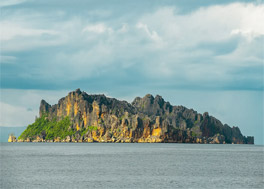

![Odyssey in the heart of Japan's subtropical islands[Hong Kong - Naha, Okinawa] Odyssey in the heart of Japan's subtropical islands[Hong Kong - Naha, Okinawa]](/images/packages/Odyssey-in-the-heart-of-Japan.jpg)
![Odyssey in the heart of Japan's subtropical islands[Hong Kong - Naha, Okinawa] Odyssey in the heart of Japan's subtropical islands[Hong Kong - Naha, Okinawa]](/images/packages/extraimages/6589_Hong-Kong---Naha,-Okinawa.jpg)
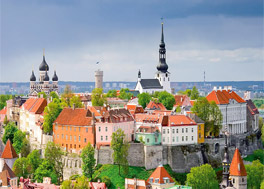
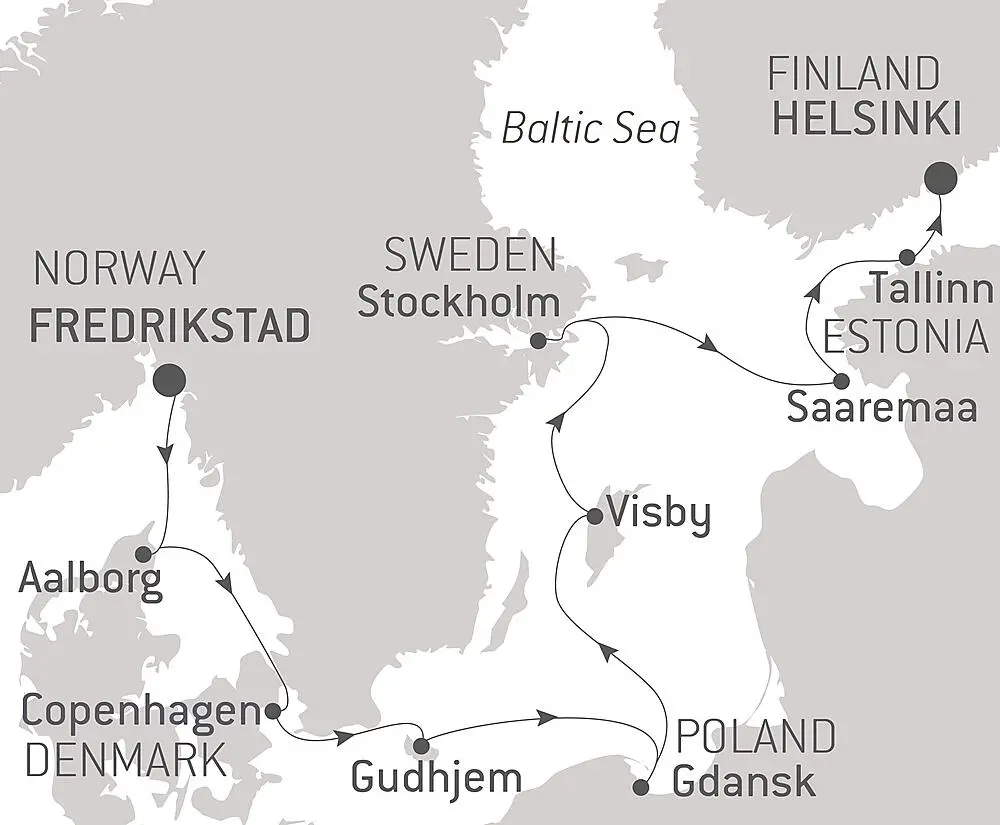
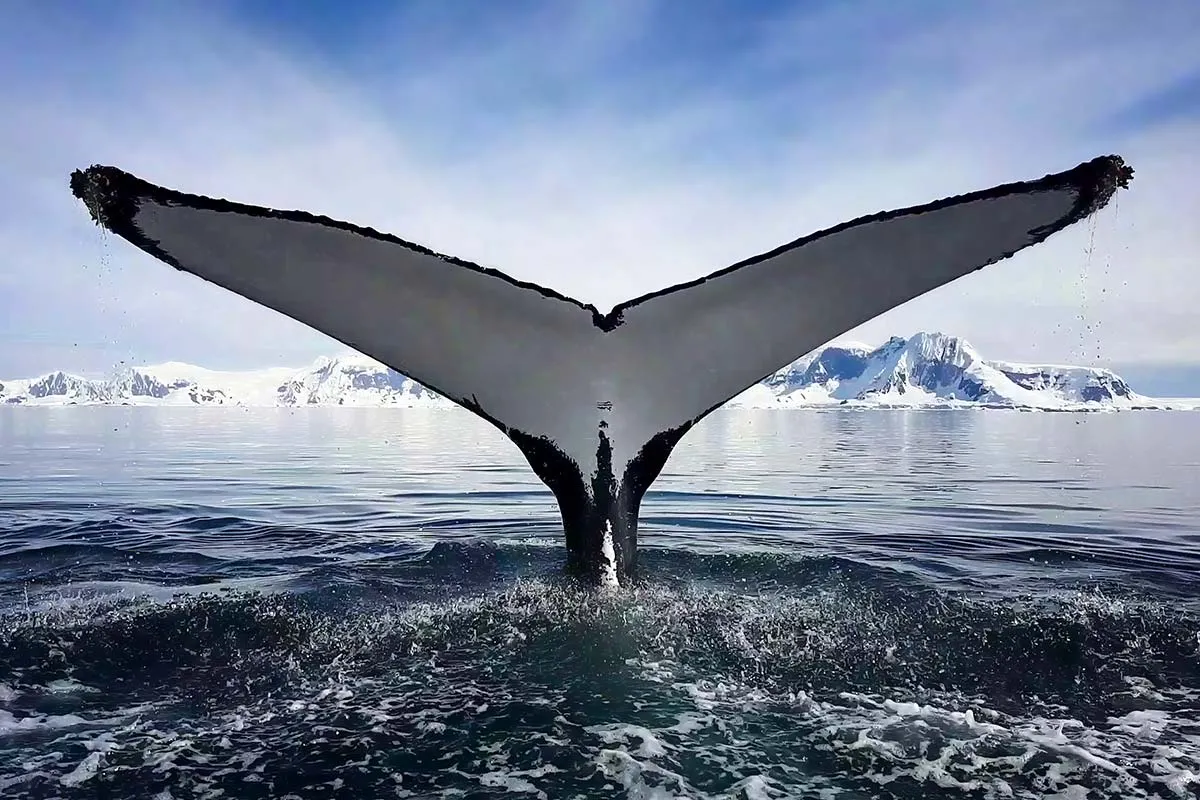

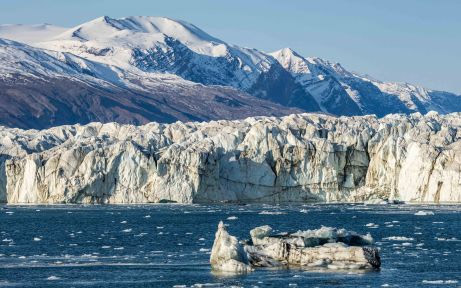

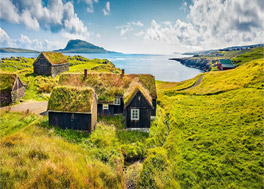


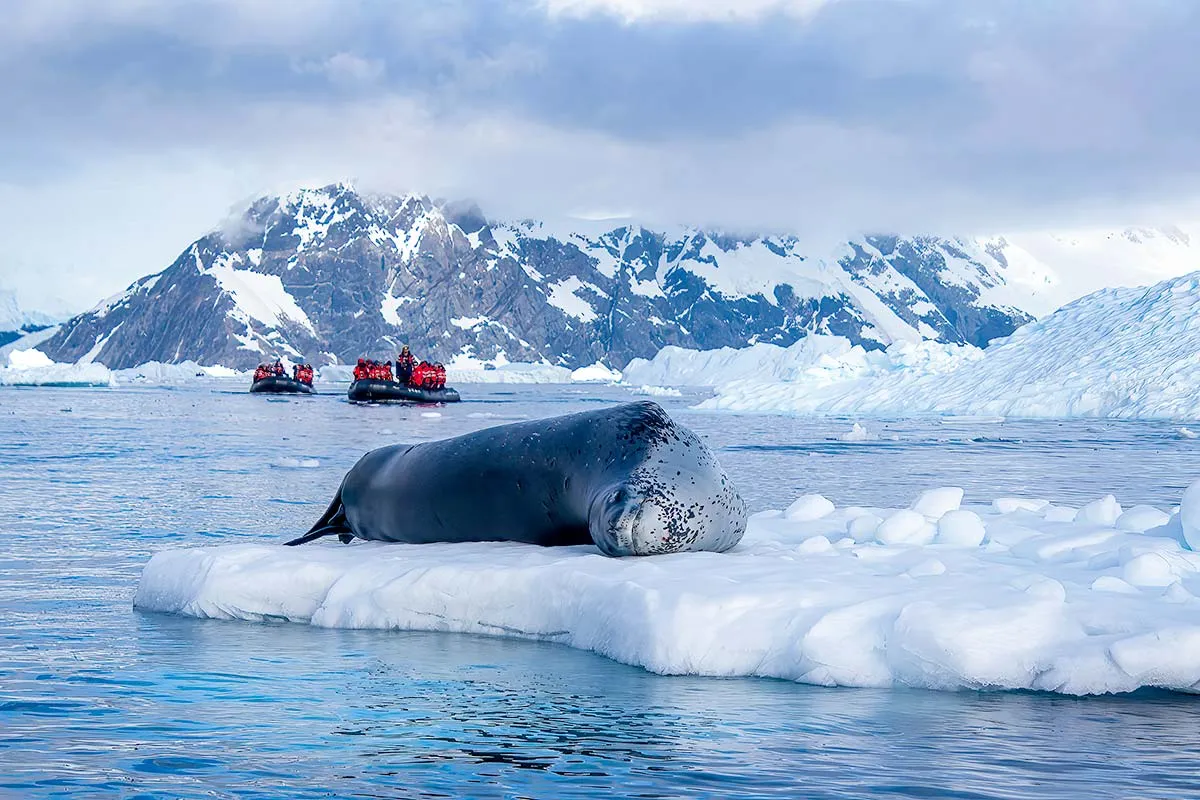
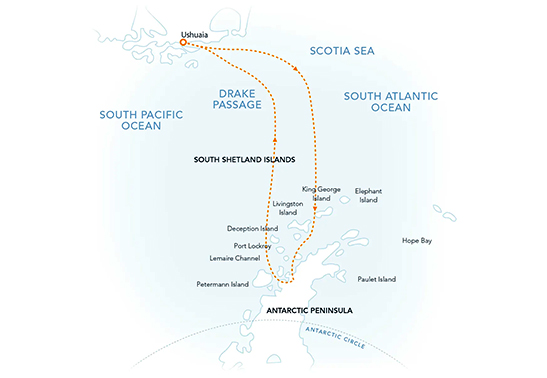
![Odyssey in the heart of Japan's subtropical islands[Osaka - Ishigaki] Odyssey in the heart of Japan's subtropical islands[Osaka - Ishigaki]](/images/packages/extraimages/9319_Osaka---Ishigaki.jpg)
